Insect Life Cycles 101: Hemimetabolous vs. Holometabolous Explained
Insects have a wide variety of fascinating life cycles and life history strategies, yet the basic forms that are used to build up these life cycles are relatively simple and easy to understand.
The most dramatic way of dividing up the insect world is separate them into those that have an incomplete metamorphosis (i.e. Hemimetabolous insects) and those that have a complete metamorphosis (i.e. Holometabolous insects).
The important thing here is the degree of metamorphosis the insect undergoes in its journey from an egg to an adult. All insect life cycles start with an egg, and end with an adult insect. It is only the path between these two points that makes the difference.
The question that distinguishes the two different paths is really “is there a pupa? or is there not?”
- Hemimetabolous = Egg » Nymph » Adult (3 stages)
- Holometabolous = Egg » Larva » Pupa » Adult (4 stages)
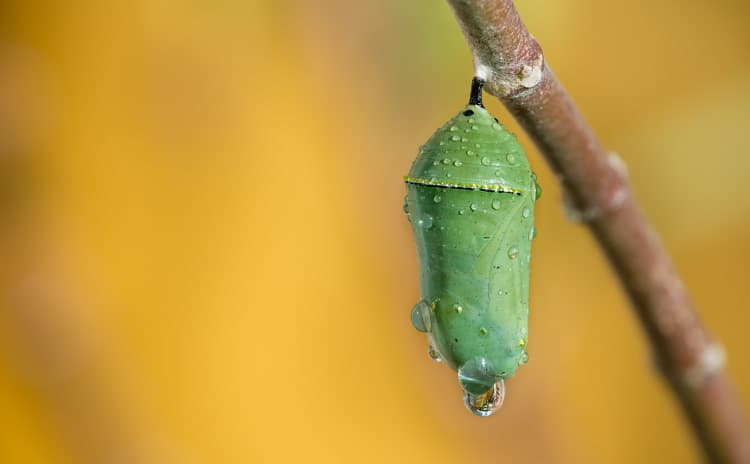
A pupa is a special resting, normally unmoving stage of an insect’s life. During this stage it undergoes that miraculous transformation, from a bag with a mouth at one end – and an anus at the other – into a wonderfully sculptured and complex adult insect.
This is the magic of metamorphosis and I will tell you more about that later on.
Hemimetabolous Insects
Insects with an incomplete metamorphosis (i.e the 3 stage or Hemimetabolous ones) have no pupa and their wings, in those insects that have wings, develop on the outside of their body. What hatches out of the egg looks, in most cases, like a wingless miniature version of the adult insect. Some good common examples are Cockroaches, Grasshoppers and Crickets, Stick Insects and True Bugs (Shield bugs, Squash bugs, Stink bugs etc.)
Others are not quite so obvious because the nymphs, (which is the correct word to describe a juvenile hemimetabolous insect) spend all their time in the water, i.e. they are aquatic.
In these cases the nymphs do not look quite as similar to the adult forms as do the wholly terrestrial (living on dry land) insects. However because they have no pupa – and because their wings develop in small buds on the outside of their bodies – we know they are hemimetabolous.
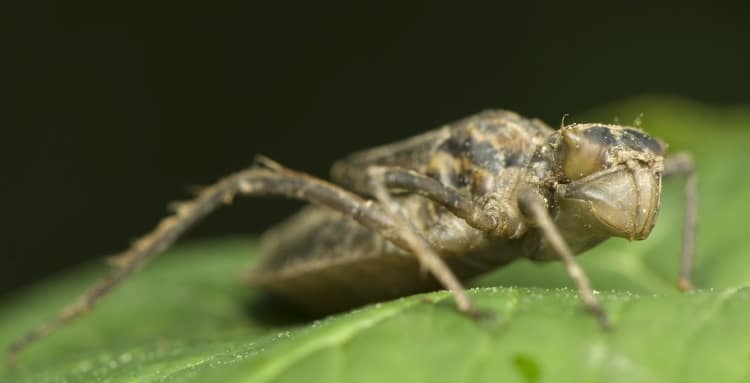
I am of course referring to Damsel and Dragon flies, Mayflies, and Stoneflies. Primitive insects without wings and virtually no metamorphosis such as Silverfish (Thysanura) are generally included in the Hemimetabolous orders.
Holometabolous Insects
Insects with a complete metamorphosis and a 4 stage life cycle (i.e the Holometabolous ones) do have a pupa – and their wings develop inside their bodies – and are therefore not seen at all until the adult insect emerges.
The young of holometabolous insects, properly called ‘larva’ seldom look anything like the adult forms of the insect at all.
Some well known examples are True Flies (Diptera) and their maggots, Butterflies (Lepidoptera) and their caterpillars, Dobsonflies (Neuroptera) and their hellgrammites and Beetles (Coleoptera) and their grubs.
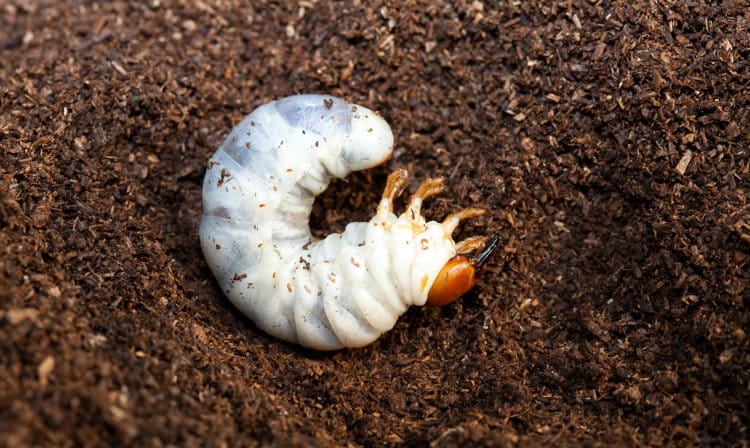
You may have noticed that I have used a different name to describe the larva of each type of insects. These names are common names and are not used as strictly as the more general ‘larva’, but they often convey useful information – so it is fun to know them.
Inside the pupae, the insect undergoes the miracle of a complete metamorphosis. Below is a little tale about what happens to a caterpillar when the time has come.
The degrees of change and some of the finer details vary between the various insect orders – as does the degree of movement available to the pupa itself. However the basics are the same for all the holometabolous insects orders.
Metamorphosis
When the caterpillar has eaten enough, it turns into a pupa (more about this later on, because it is different for different groups of Lepidoptera). To do this, it stops eating and finds somewhere safe. Here it becomes very still (pupa never eat and seldomly move at all) and then moults its skin the same as it does when it is growing – only instead of another larval skin, it secretes a pupal skin (inside its old larval skin) that is much thicker and stronger.
Generally, this pupa then breaks out of the old larval skin. Though in many moths the pupa remains inside the old larval skin, you can often find the remains of the caterpillar skin around the tail of a Butterfly pupa.
All that is fairly straight forward. Where it gets tricky is how the caterpillar inside its new pupal case changes itself into a Butterfly or Moth.

The first thing that happens is that a lot of the caterpillar’s old body dies.
It is attacked by the same sort of juices the caterpillar used in its earlier life to digest its food. It would not be far wrong to say the caterpillar digests itself from the inside out – this process is called ‘histolysis’. Not all the tissue is destroyed however, some of the insect’s old tissue passes on to its new self. The amount that does this varies between different insects – and is not very much in the Lepidoptera.
There is one other sort of tissue left. In a number of places in the insect’s body are collections of special formative cells which have played no part in the insect’s larval life – and have stayed hidden or protected during this partial death. Each of these groups of cells is called an ‘imaginal bud’ or a ‘histoblast’.
The job of these histoblasts is to supervise the building of a new body – out of the soup that the insect’s digestive juices have made of the old larval body.
This they do using the same biochemical processes that all insects use to turn their food into part of their bodies. This rebuilding process is called ‘histogenesis’. During this time the insect is very vulnerable because it cannot run away – and this is why insects try to choose somewhere safe to hide away in when they are going through this incredible change.
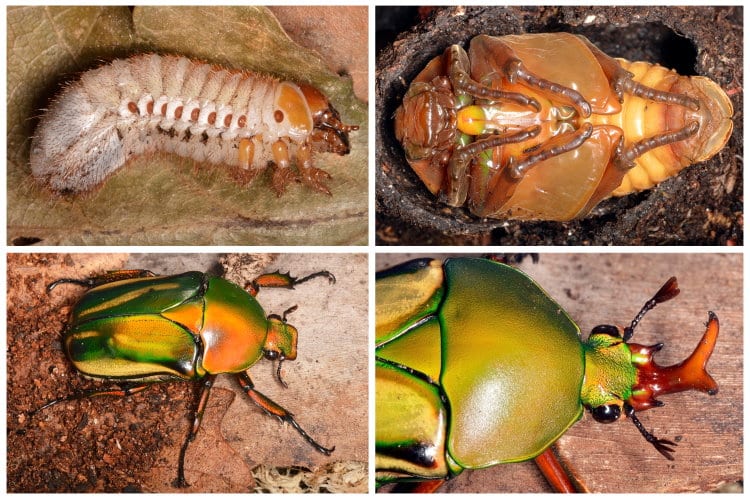
This also explains why it is harder to find pupae than it is to find adult insects. Still I think you have to be very brave to be a Caterpillar and then become a Butterfly or a Moth.
Some More Ideas
Spending the juvenile part of your life under water in a stream or pond is not something that just the hemimetabolous insects do. Many holometabolous insects have aquatic larval stages, such as most Caddisflies (Trichoptera), some True flies – such as Mosquitoes and many Neuroptera and Coleoptera.
It is interesting to note that only one order of holometabolous insects (i.e. Coleoptera; Diving Beetles, etc.) and one order of hemimetabolous insects (i.e. Hemiptera; Water Boatmen, etc.) have produced completely aquatic species. I.e. species whose adults live primarily in or on the water, as well as the larvae.
Sometimes you might see the term ‘Naiad’ used to describe an aquatic nymph – but it should not be used to describe an aquatic larva.
Insects do not appear to grow continuously the way we do, because their skins can not grow bigger as the insect grows. Instead, every now and then, they shed their old skin and inflate a new larger one – which they have built up inside their old one.
Thus they appear to grow in a series of stages. This is far more obvious with the nymphs of hemimetabolous insects like Stick-insects, who often leave their old skins hanging around for people to see.
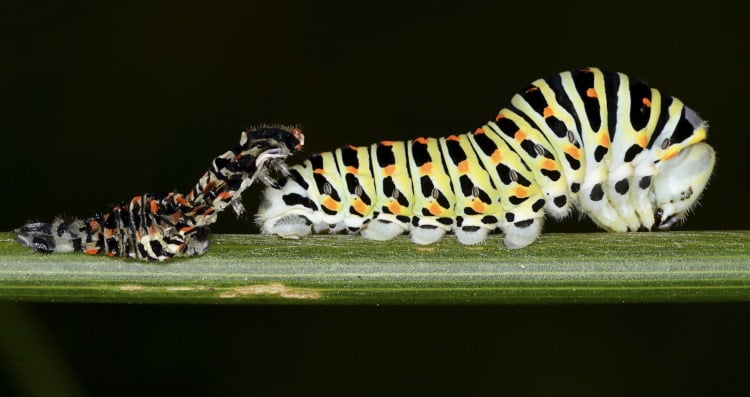
The skins of caterpillars and maggots stretch a lot more than those of the hemimetabolous insects. Because they often have far smaller and simpler legs, the process of the moult takes less time and is therefore less often seen.
Most caterpillars shed their skin 3 times before they reach the pupal stage. This shedding of the old skin is called ‘moulting’ or ‘ecdysis’ and all arthropods have do it – not just insects. The skin that is left behind is called an ‘exuviae’
The nymphal and larval stages of most insects involve several, from 3 to 15, moults (or skin sheds).
The time spent between hatching from the egg and the 1st moult of the skin is called the ‘1st instar’. The time between the 1st moult and the 2nd moult is called the 2nd ‘instar’, etc.
You may often read that a particular species of insect has 4 instars, which means that it moults its skin 4 times before it reaches the adult or pupal stage of its life. Therefore, rather than:
Egg » Nymph » Adult
or
Egg » Larva » Pupa » Adult
Most insect life cycles look like this:
Egg » Nymph 1 » Nymph 2 » Nymph 3 » Nymph 4 » Adult
or
Egg » Larva 1 » Larva 2 » Larva 3 » Pupa » Adult
These are only the basics. For every general rule in entomology, there dozens of insects which do it differently.
For instance, some insects hatch into an unusual form of young called a pronymph (see Orthoptera). While others, particularly the Lepidoptera, have a stage between their last larval instar and their pupa called a prepupa. This is basically an inactive, non-metamorphic resting state.
Generation time
A second way we can describe insect life cycles depends on how long it takes between the egg being laid – and the adult insect (which started out life as that egg) laying some more eggs of her own.
This is called generation time. It can range from a little as two weeks, in some Drosophila (Fruit flies), to 17 years in some periodical Cicadas – and even longer in some dry-wood boring beetles.
The most common lifecyles are ones which take one year to complete. These we call ‘Univoltine’ and those where there are two generations per year – we call ‘Bivoltine’.
If it takes the insect two years to complete just one generation we call it ‘Hemivoltine’, and if, like the Drosophila or Aphids, an insect has many generations in one year we call it ‘Multivoltine’.
Activity Rhythms
A third way to describe the insect life cycle is in terms of its daily activity rhythms.
Thus insects which are primarily active during the day, like Butterflies, are referred to as ‘diurnal’, and those which are mostly active at night, like Moths are referred to as ‘nocturnal’.
Some insects are only active during the twilight zones at dawn and dusk. We have a special word for these sorts of insects which is ‘crepuscular’.
These names apply to all sorts of creatures and plants not just insects. Thus a species of flower which only flowers at dusk – and the solitary bees which specialise in foraging from and pollinating it – are both referred to as crepuscular.
Reproductive Strategies
A fourth set of terms we use to describe the insect life cycle refers to the way in which the young are produced.
There are three basic ways that young insects are introduced into the world.
The first and most common is ‘oviparity‘ or egg laying. An oviparous insect, (or bird or reptile) lays one or more eggs which later hatch into young.
The direct opposite to this is ‘viviparity‘ where the egg develops into a juvenile form inside the female’s body and is nurtured by the female’s body as it grows and until it is born. Only a few insects are viviparous such as the Tetse Fly; however for mammals like us, viviparity or live birth is the normal occurrence.
A third option used by some insects is to produce eggs with shells which receive no nourishment from the female after the egg is formed (just like oviparity); but instead of laying the eggs somewhere, the female keeps them in her body until they are ready to hatch.
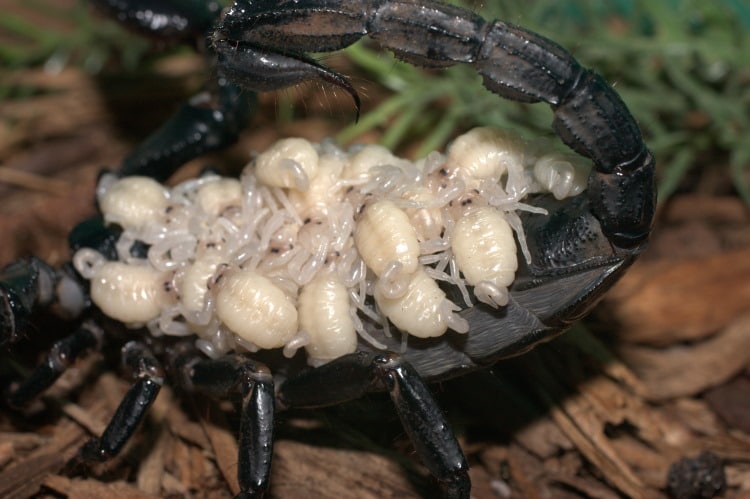
This way though, they only have the resources within the egg to draw on and are better protected from the environment. This is called ‘ovoviviparity‘ which takes some practice to say and is not very common, though it does occur in some True Flies and Cockroaches.
Besides how the young are produced we can observe differences in the timing of their production.
Here I use just egg laying insects i.e. oviparous ones, as examples – though the principles are the same for all animals. For many insects, in fact most of them, after the female has matured and mated she lays her eggs as soon as she can and then dies.
In some species of Mayflies this can take only a few hours, however for most insects it takes longer from several days to several weeks. The point is she has one set of eggs which she lays and that is that. This sort of life cycle is called ‘semelparity‘ and an insect which possesses it is called ‘semelparous‘, a good example of this sort of life cycle is the giant Cercropia moths of America.
The opposite to this is where the female lays her first lot of eggs and then spends some time building up her resources, before producing and laying a second set. This may happen several times resulting in many sets of eggs or young being produced.
This sort of reproductive life cycle is called ‘iteroparity‘. Many Ground Beetles (Carabidae) are iteroparous, and iteroparity is the normal method of reproduction for birds and mammals.
Final Thoughts
I hope this has been an interesting introduction to the various insect life cycles… Well, hopefully at least the next time somebody asks you the difference between ‘hemimetabolous’ and ‘holometabolous you’ll be able to give them a half sensible answer!



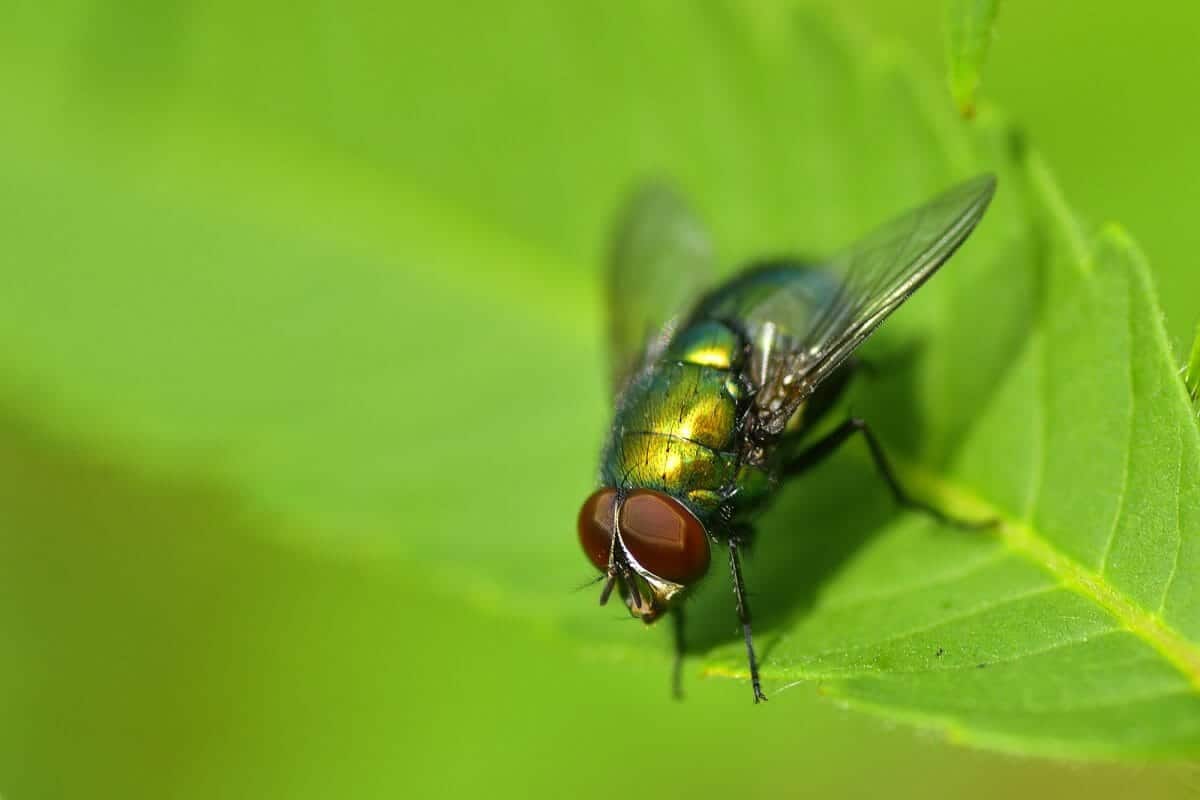
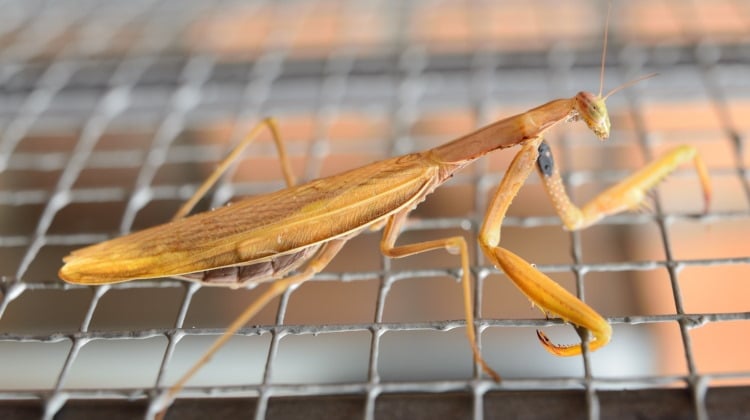
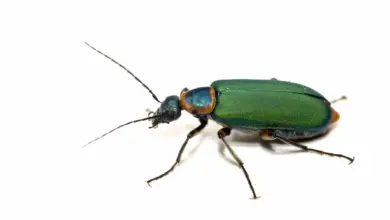
Excellent article on the lifecycles of various insects. You are a gifted instructor, Sir!